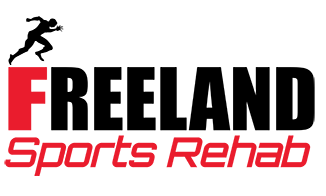In the dynamic world of sports, overhead athletes like baseball and softball players face unique challenges. The repetitive motions and intense physical demands placed on their shoulders, elbows, and wrists can lead to significant strain and injury. Physical therapy is a cornerstone for maintaining peak performance and ensuring long-term athletic health. Here’s how physical therapy benefits overhead athletes and what essential strategies can help them stay at the top of their game.

Understanding the Demands on Overhead Athletes
Overhead athletes frequently perform high-velocity, repetitive arm movements. These actions place immense stress on the upper body, particularly the shoulder complex. Key areas of concern include:
Rotator Cuff: This group of muscles and tendons stabilizes the shoulder. Repetitive stress can lead to strains, tears, and inflammation.
Labrum: The cartilage that surrounds the shoulder socket can become torn, leading to instability and pain.
Elbow and Wrist: Conditions like Ulnar Collateral Ligament (UCL) injuries and tendinitis are common among overhead athletes due to the strain from throwing motions.

The Role of Physical Therapy
Physical therapy plays a pivotal role in both the prevention and rehabilitation of injuries in overhead athletes. Here’s how:
- Biomechanical Analysis: Physical therapists use advanced techniques to analyze an athlete’s movements. This helps identify improper mechanics that could lead to injury. Correcting these issues early can prevent future problems.
- Strengthening Programs: Customized strength training programs focus on the shoulder girdle, core, and lower body. These programs enhance muscular endurance and balance, reducing the risk of injury.
- Flexibility and Mobility: Maintaining optimal flexibility and joint mobility is crucial. Physical therapists design stretching routines to ensure muscles and joint function correctly without undue stress.
Injury Rehabilitation
- Individual Treatment Plans: After an injury, physical therapists develop tailored rehabilitation plans. These plans focus on gradual, progressive recovery to ensure a safe return to sport.
- Pain Management: Techniques such as manual therapy, ice, heat, and electrical stimulation help manage pain and reduce inflammation.
- Functional Training: Rehabilitation includes functional exercises that mimic the specific demands of the athlete’s sport. This prepares the athlete for a seamless transition back to competition.

Maximizing Performance and Preventing Overhead Injuries with Physical Therapy at Midland and Freeland Sports Rehab
At Midland and Freeland Sports Rehab, we understand that physical therapy is an indispensable asset for overhead athletes. It offers a proactive approach to injury prevention and a structured pathway for recovery. By focusing on biomechanics, strength, flexibility, and proper training techniques, athletes can maintain peak performance and extend their careers. Whether you’re a young athlete just starting or a seasoned professional, integrating physical therapy into your routine is a game-changer. Our skilled physical therapists are dedicated to helping you achieve your goals through personalized care are expert guidance.
Investing in physical therapy means investing in your long-term health and success. Overhead athletes, take note: your path to peak performance and injury prevention starts with the expertise and guidance of a skilled physical therapist. Keep throwing swinging and reaching for the stars—your body will thank you for it. Book an appointment with Midland Sports Rehab or Freeland Sports Rehab today to prevent future injuries and complications!



